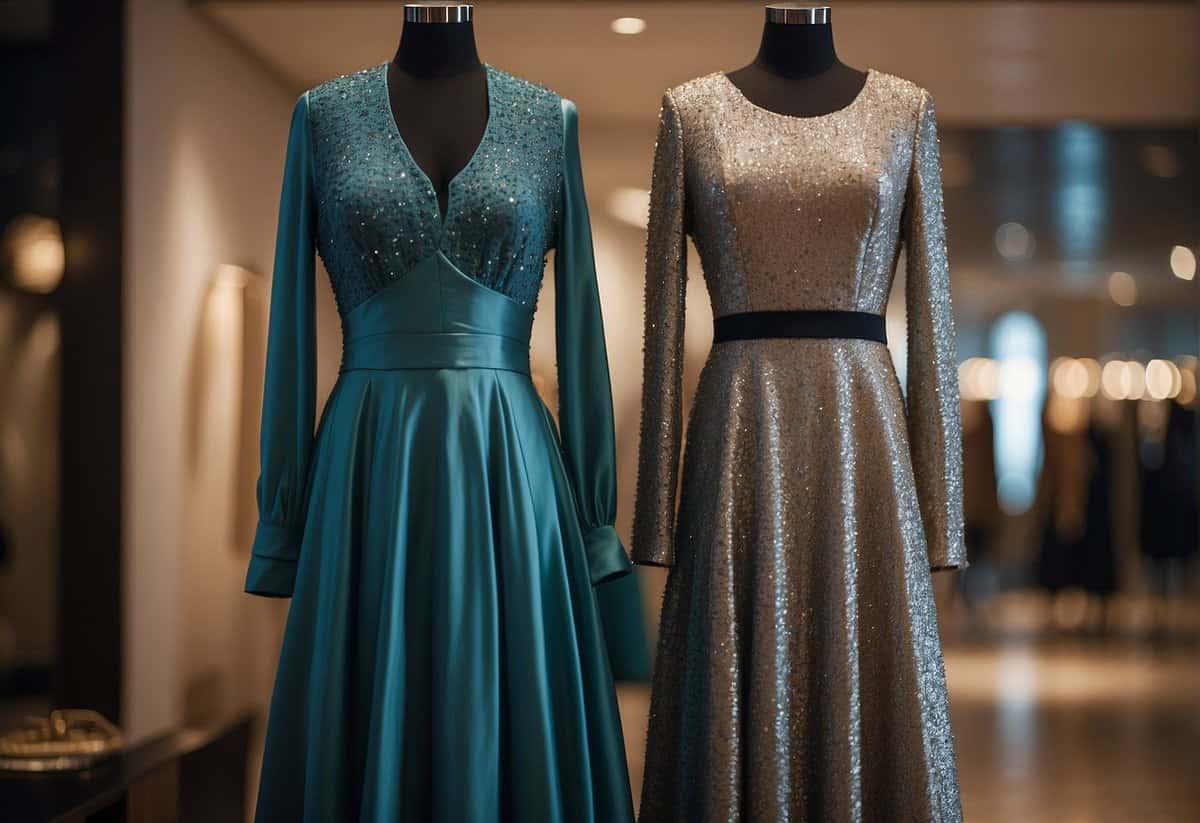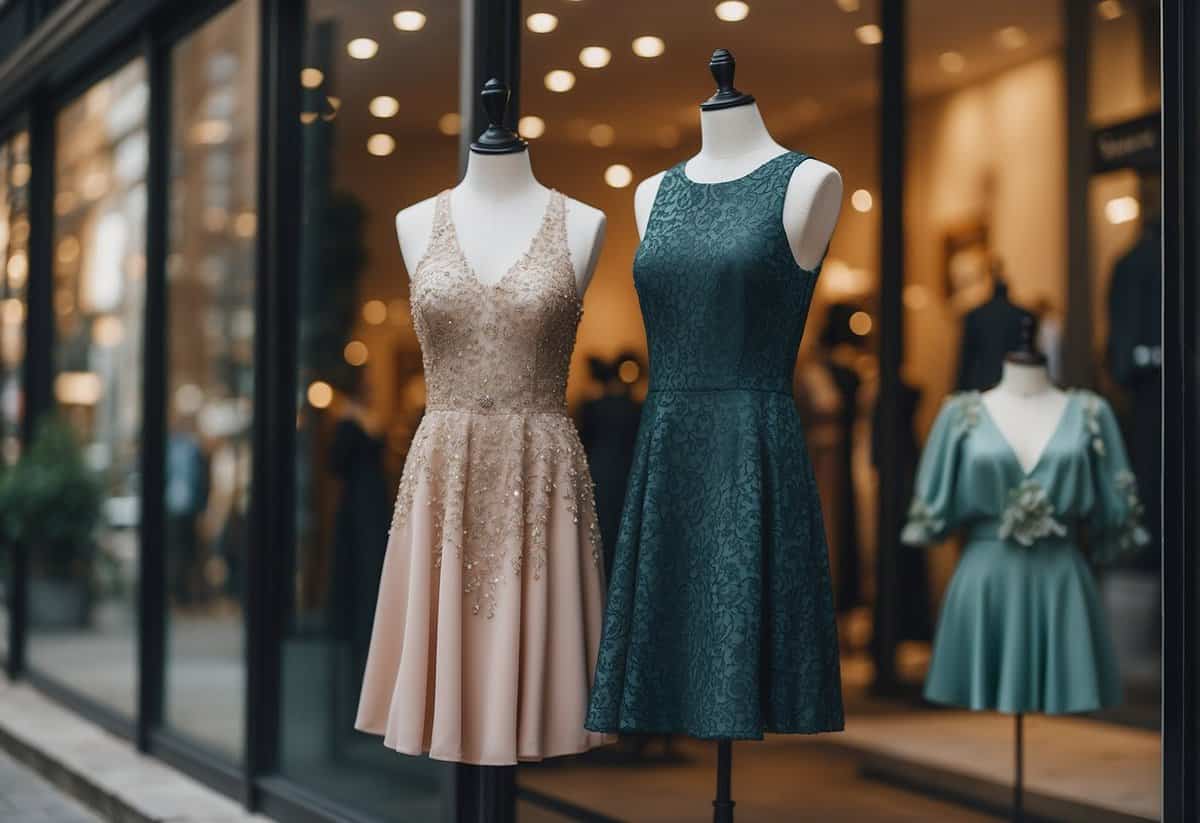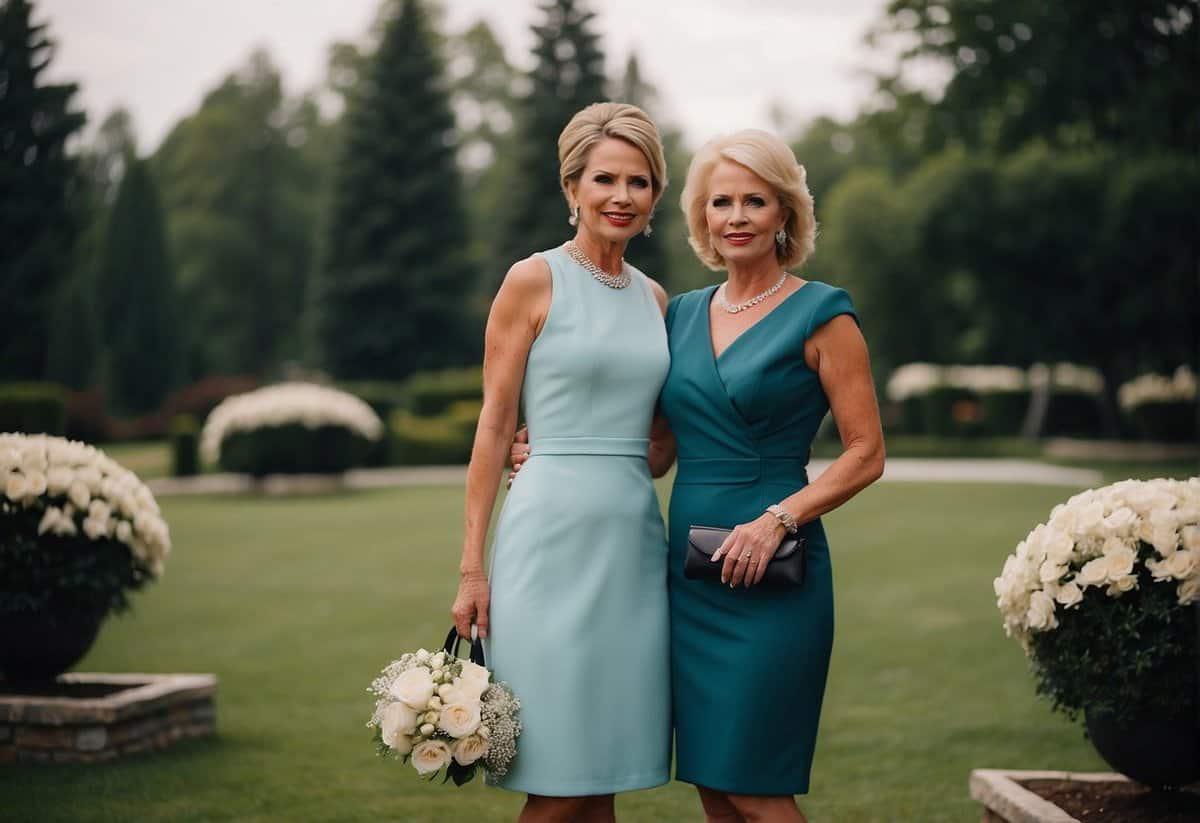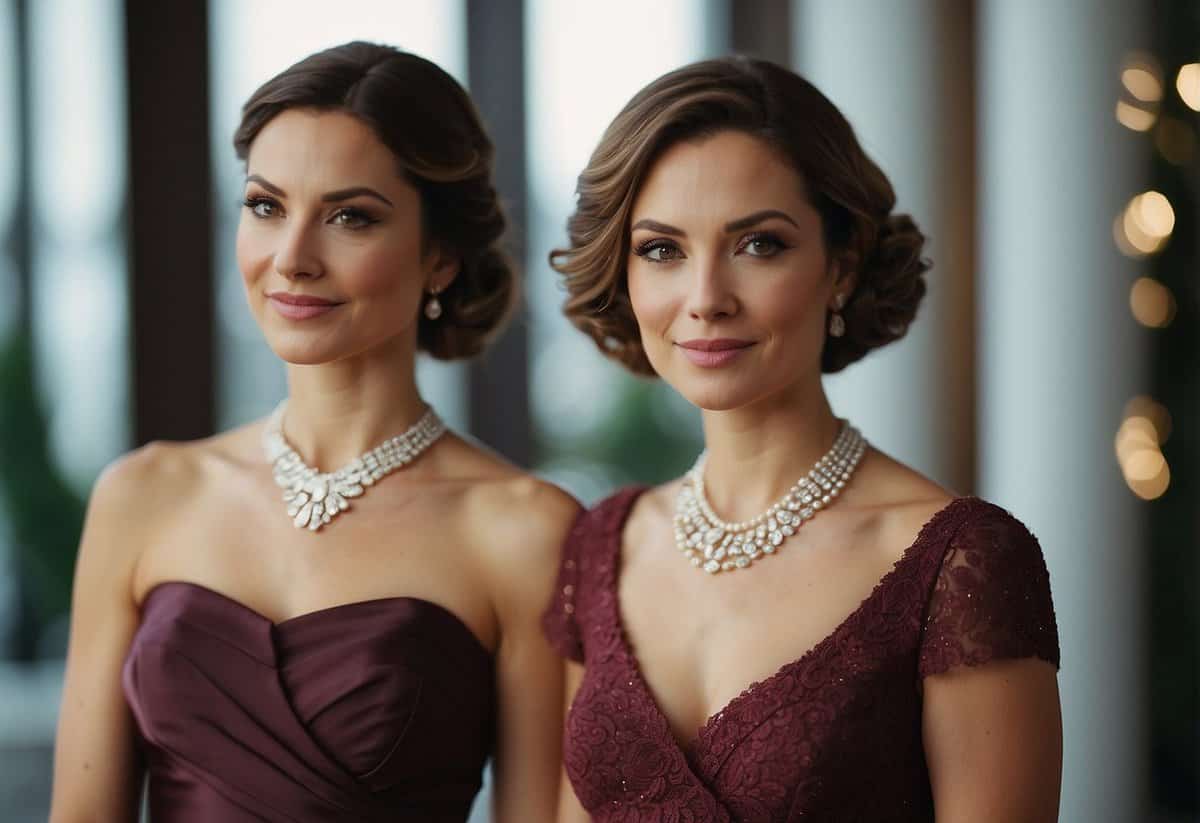Can Mother of Bride and Mother of Groom Wear the Same Color Dress? Tips for a Harmonious Look
Deciding on the appropriate attire for a wedding can sometimes involve navigating a delicate balance of tradition, style, and personal preference, particularly when it comes to what the mother of the bride and mother of the groom should wear. A common question that arises is whether both can wear the same color dress. Traditionally, wedding etiquette has offered various guidelines on this matter, suggesting that while the mothers’ dresses should complement the wedding’s color scheme, they should not be identical to avoid confusion and ensure each stands out in her own right.

It’s essential for the mothers to communicate with each other and with the bride to come to a harmonious decision. The options can range from choosing different shades or tones of a particular color to selecting entirely different colors that still fit within the overarching palette of the wedding. This approach allows both mothers to look their best without overshadowing the bride on her special day.
Key Takeaways
- Navigating wedding attire etiquette ensures the mothers stand out individually.
- Effective communication between mothers and the bride is crucial for dress selection.
- Complementary colors are preferred to maintain cohesion with the wedding theme.
Wedding Attire Etiquette

When preparing for a wedding, understanding proper attire etiquette can ensure a harmonious and elegant day. This is particularly important for the mothers of the bride and groom, as their outfits should reflect the importance of their roles and the tone of the celebration.
Understanding Traditional Etiquette
Traditionally, the mother of the bride selects her dress first, setting the tone for what the mother of the groom will wear. This order of selection helps to avoid any potential clashes in styles or colors on the wedding day. The two dresses should be complementary but not identical in color, reflecting the unified but distinct families coming together. While the dress code and wedding theme are vital considerations, the attire should also appropriately reflect the season and the wedding party‘s overall color scheme.
Coordinating Mothers’ Outfits
Coordination doesn’t mean matching; it’s about creating a balanced visual symphony. Here’s a quick guide:
- Aim for dresses that are similar in formality and style.
- Choose colors that complement the bridal party but are distinct enough to stand out.
- Outfit lengths should be consistent, especially if it’s a formal dress code.
In terms of colors, if the wedding has a neutral color scheme, shades like champagne or dove gray work well. For more vibrancy, such as a summer garden wedding, softer tones of the wedding’s color palette can be a good choice.
Communication Between Families
Open and respectful communication between families is crucial. As soon as the bride has selected the bridesmaids’ dresses, it’s courteous for the mother of the bride to share her chosen dress with the mother of the groom. This can be done via a meeting, through pictures, or even shopping together. This gesture of support and guidance will ensure a cohesive look and convey the sense of unity you want on the wedding day.
During this time, it’s essential for both mothers to provide each other with feedback and to reach a consensus on their outfits that align with the couple’s vision and wedding theme. This collaboration fosters not just visual coordination but also strengthens family bonds.
Selecting the Perfect Dress

When preparing for a wedding, selecting the perfect dress for the mothers of both the bride and groom is a delicate balance of color coordination and individual style. Remember, the focus should be on complementing the wedding’s overall aesthetic while maintaining personal style and comfort.
Color and Theme Harmony
The color of the dress you choose should harmonize with the wedding’s color palette and theme. Mother-of-the-bride dresses and mother-of-the-groom dresses don’t have to match exactly but should fall within the same color spectrum to create a cohesive look. Consider seasonality as well—pastels work well for spring, while jewel tones are lovely in the fall. Avoid colors that clash with or match too closely to the bridesmaids’ dresses or wedding gown to maintain visual balance.
- Spring/Summer: Soft pastels, light fabrics, floral patterns
- Fall/Winter: Rich jewel tones, heavier fabrics, intricate embellishments
Choosing the Right Style and Silhouette
Your personal style should shine through when selecting a dress silhouette that flatters your figure. Whether you opt for a lace adorned floor-length gown or a chic midi dress, ensure the style both complements the formality of the event and makes you feel confident.
- Gown: Elegance suited for formal weddings; consider floor-length for black-tie events
- Midi Dress: Versatile and often preferred for semi-formal weddings
- Jumpsuit: A modern, sophisticated alternative
From V-necklines to sleeves or sleeveless options, the right style for you exists. Remember that it’s not only about the dress itself but the complete outfit, including jewelry and shoes, which should all contribute to a look that’s as timeless as it is memorable. Prioritize fabric choices that work with the season — lighter fabrics for warmer weather and heavier ones for cooler temperatures. The length of the dress, from midi to floor-length gown, should align with the wedding’s formality level, and the silhouette should enhance your best features for a day of comfort and elegance.
Keep in mind, the etiquette suggests that the mother of the bride typically chooses her dress first, allowing the mother of the groom to select a coordinating style. This approach ensures a visual synchronicity without overshadowing the bride and groom.
Dress Coordination and Contrast

When planning attire for a wedding, achieving a cohesive look is vital, especially for the mothers of the bride and groom. The aim is to balance individuality with the wedding’s overall aesthetic, ensuring the color palette promotes visual harmony in photos without overshadowing the bridesmaids or wedding couple.
Avoiding Color Clashes
To avoid color clashes, consider the wedding’s color scheme and bridesmaids’ dresses as your guideline. It’s generally advisable to steer clear of selecting the same color as the bridesmaids or the wedding gown. If, for instance, the bridesmaids are dressed in lavender, you might want to select a shade that stands out yet still fits within the wedding’s overall color palette. Retailers like Nordstrom often offer a variety of hues suited to weddings that can help you achieve this balance.
Complementary Colors and Accessories
Adopting complementary colors can add to the overall harmony of the wedding’s aesthetic. If you are inclined to have a matching element with the other mother, consider doing so through accessories or in smaller color accents within your ensemble. For example, if one of you is dressed in a deep navy, the other might choose a slate gray accented with a navy hat or jewelry. These subtle nods maintain individual styles while contributing to a cohesive look. Shops like BHLDN provide accessories that could help you achieve a harmonious, yet unique, outfit.
Finalizing the Look

When it comes to completing your ensemble for your child’s wedding, it’s important to consider both dress alterations and the venue‘s influence on your attire to achieve visual harmony.
Addressing Dress Alterations
Whether you’ve chosen a navy sheath or an emerald green gown, dress alterations are critical for ensuring a perfect fit. If the wedding dress code is black-tie, ensure your mother of the bride dress is tailored to the correct dress length—typically floor-length for such formal affairs. Keep in mind that even if you’re wearing the same color as the mother of the groom, alterations can differentiate your looks through varying hemlines and silhouettes.
The Role of Venue and Dress Code
The venue and dress code are pivotal in choosing the right color. For a black-tie wedding, luxurious jewel tones, deep burgundy, and classic black exemplify elegance. Venues with a specific theme, such as a garden setting, could call for lighter shades like champagne or blush. Always aim for a cohesive look that complements the wedding color scheme. If the ceremony is in a modern space, sleek gray or metallic may suit the aesthetic, whereas traditional locales may welcome rich, warm hues. Remember that each event, from the rehearsal dinner to the wedding ceremony, might have a distinct atmosphere requiring a versatile approach during the wedding planning process.
Frequently Asked Questions

Choosing the right attire for a wedding can be a delicate matter, especially when traditions and personal preferences intersect. Let’s address some common questions to ensure you’re well-informed for the upcoming celebration.
Is it acceptable for the mother of the bride and mother of the groom to wear matching colors?
It is generally acceptable for both the mother of the bride and the mother of the groom to wear dresses in similar color palettes, though identical colors aren’t necessary. Coordination is key, and maintaining a harmonious look without exactly matching is the ideal approach. This guidance can help with finding the right balance.
What attire guidelines should the mother of the groom follow for her son’s wedding?
The mother of the groom’s attire should complement the wedding’s color scheme and formality. Traditionally, she waits for the mother of the bride to choose her dress before selecting her own to ensure that their outfits are well-coordinated in style and length. Here are some suggestions to help you start the process.
Are there specific color restrictions for the mother of the groom’s dress at the wedding?
While there are no strict rules, it’s considerate to avoid white, ivory, or similar shades that would clash with or mimic the bride’s dress. Bold colors like red might also be too conspicuous. Aim for a color that complements but doesn’t overshadow the wedding party. Find out more about color choices.
How can the mother of the groom select an outfit that is appropriate for her age, such as over 50s or over 60s?
Choosing a dress that reflects both your personal style and the formality of the wedding is key. It should be something you feel comfortable and confident wearing. High-quality fabrics and age-appropriate designs that suit your figure can make you feel elegant and timeless. Consider these ageless designs.
Is wearing a floral dress to the wedding considered suitable for the mother of the groom?
Floral dresses can be a lovely choice, especially for spring or summer weddings. The key is to ensure that the print is not too overwhelming and that it fits the wedding’s level of formality. Delicate floral patterns can add a touch of sophistication without being too bold.
Would it be a fashion faux pas if the mother of the groom wore black to the wedding?
Wearing black to a wedding is more acceptable than it used to be, especially for evening or formal weddings. However, it’s important to gauge the couple’s opinions and cultural considerations. If the color black isn’t against the couple’s preferences or cultural norms, it can be a chic and elegant choice.
